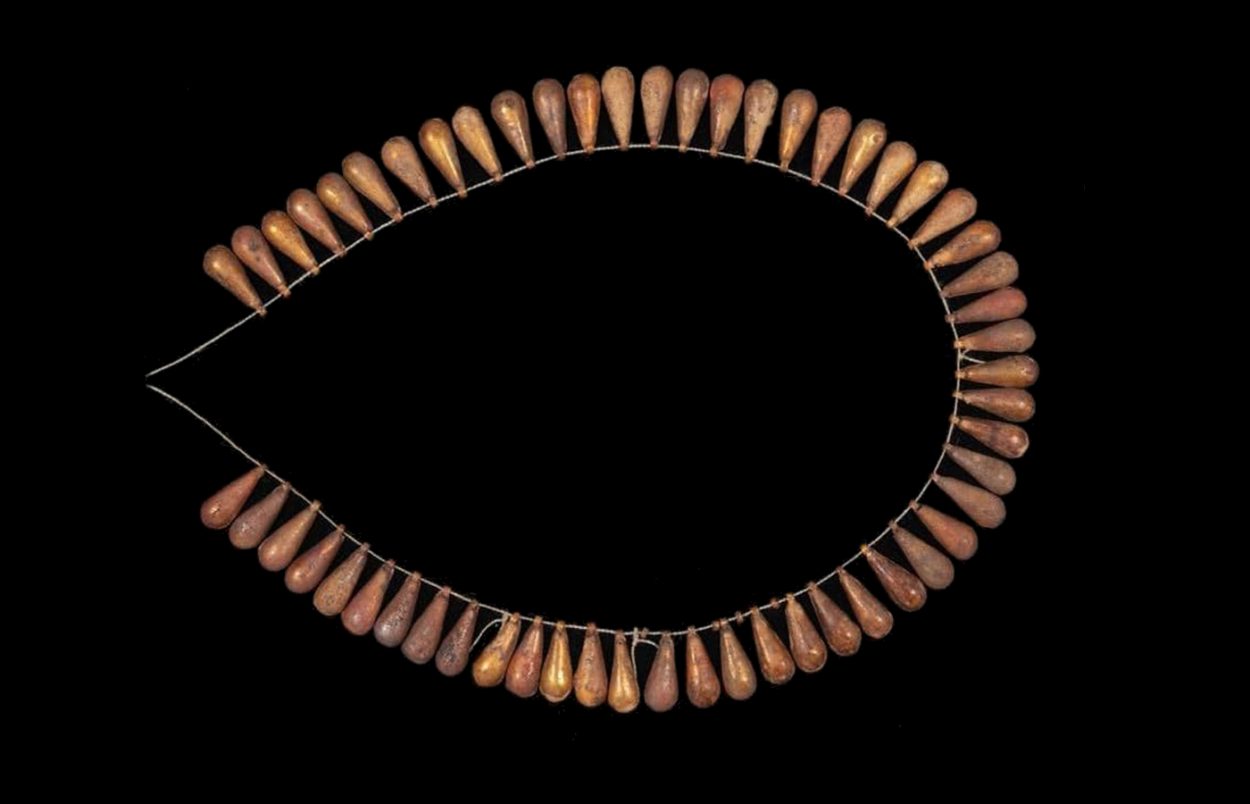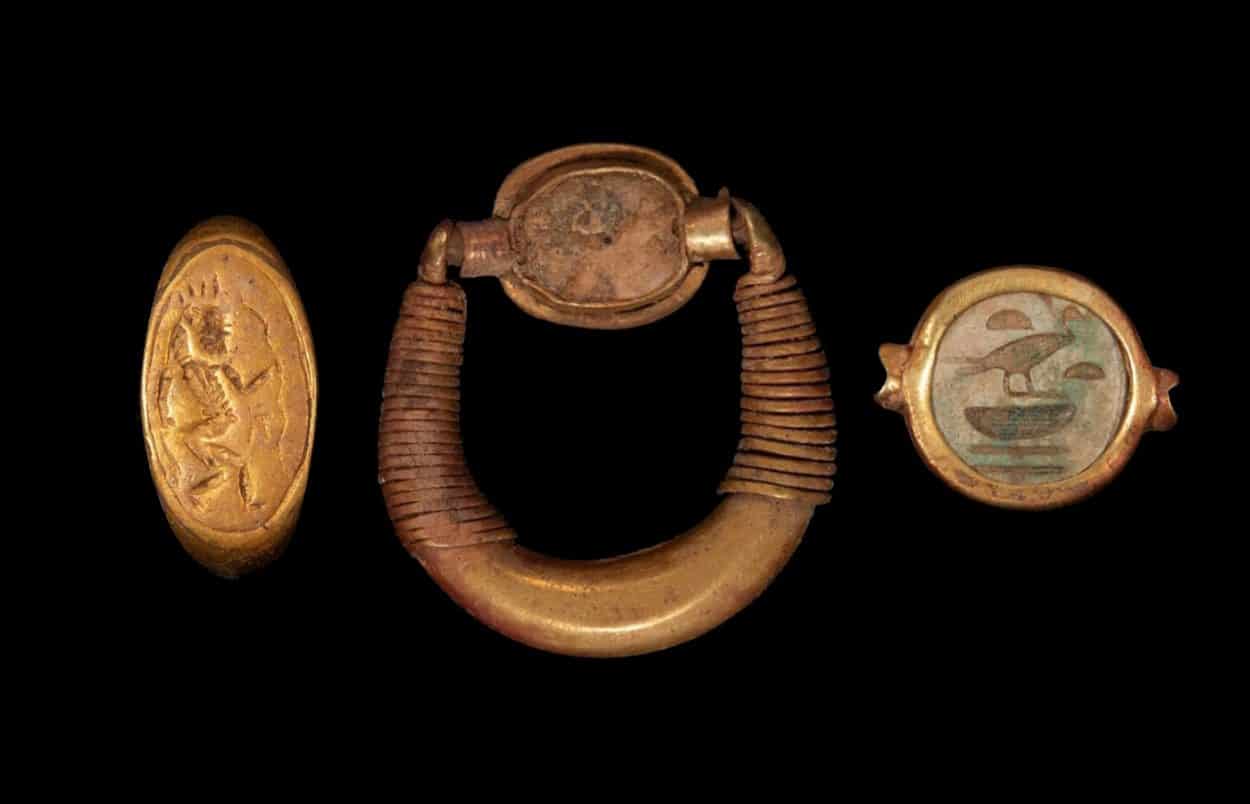An Egyptian-English archaeological mission, affiliated with the University of Cambridge, have discovered a collection of golden jewellery during excavations at the Tell El-Amarna necropolis, located on the eastern banks of the Nile, in the present-day Minya governorate of Egypt.
The necropolis was the burial ground for the city of Amarna, constructed in 1346 BC to serve as the capital city of the Pharaoh Akhenaten, the 10th ruler of the late Eighteenth Dynasty.
Akhenaten (originally named Amenhotep IV), abandoned the traditional polytheistic religions of Egypt, instead introducing the worship of Atenism, which was centred on the cult god Aten and depicted as the disc of the sun.
During his early reign, Akhenaten followed the established pharaonic traditions of worship, but quickly raised the profile of Atenism as the state religion, with the construction of temples and shrines to the Aten in cities across Egypt.
Following his death, his successors returned to the traditional deities and distanced themselves from Atenism. Akhenaten was discredited, being referred to in contemporary accounts as “the enemy” or “that criminal”, and historians often citing him as the “heretic king”.
The Amarma project has been investigating the necropolis of Amarna since 2005, with ongoing excavations supported by researchers from a University of Cambridge led archaeological mission at Tel El-Amarna since 1977.

During excavations at the Amarna North Desert Cemetery, archaeologists have discovered the burial of a young woman wrapped in textile and plant-fibre matting, and buried wearing a necklace of petal-shaped pendants and three finger rings made from gold and steatite (soapstone).
She was placed in a small shaft-and-chamber tomb along with several other burials, which dates the 18th Dynasty (1550 to 1292 BC) around the time of Akhenaten’s reign.
One of the rings is decorated with the image of “Bas”, who together with his feminine counterpart Beset, is an ancient Egyptian deity worshipped as a protector of households and, in particular, of mothers, children, and childbirth. Bes later came to be regarded as the defender of everything good and the enemy of all that is bad.
Dr Anna Stevens, from the Department of Archaeology at the University of Cambridge said: “her burial is located at the Amarna North Desert Cemetery in the low desert west of the North Tombs. It includes a small number of burial shafts and tombs, as well as pit graves.”
Ministry of Tourism and Antiquities
Header Image Credit : Ministry of Tourism and Antiquities





